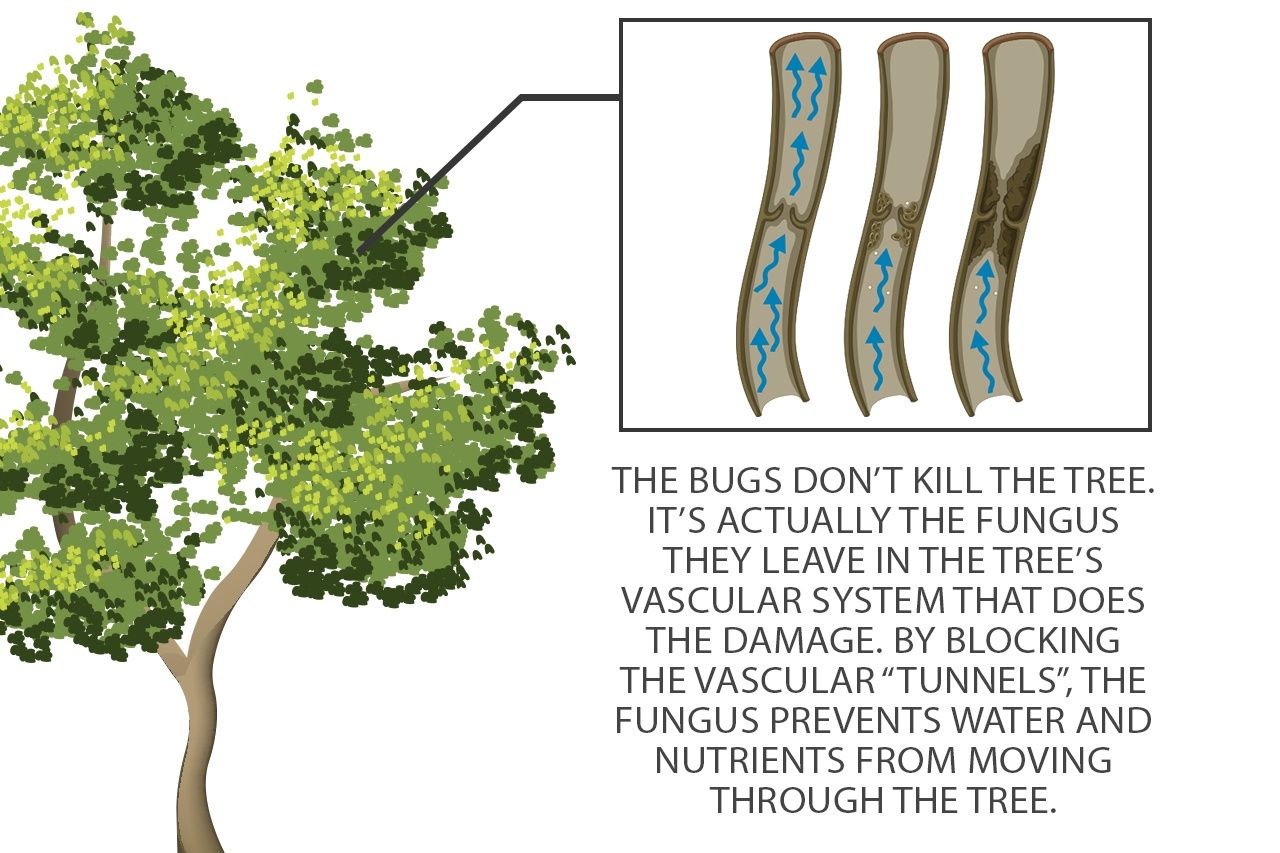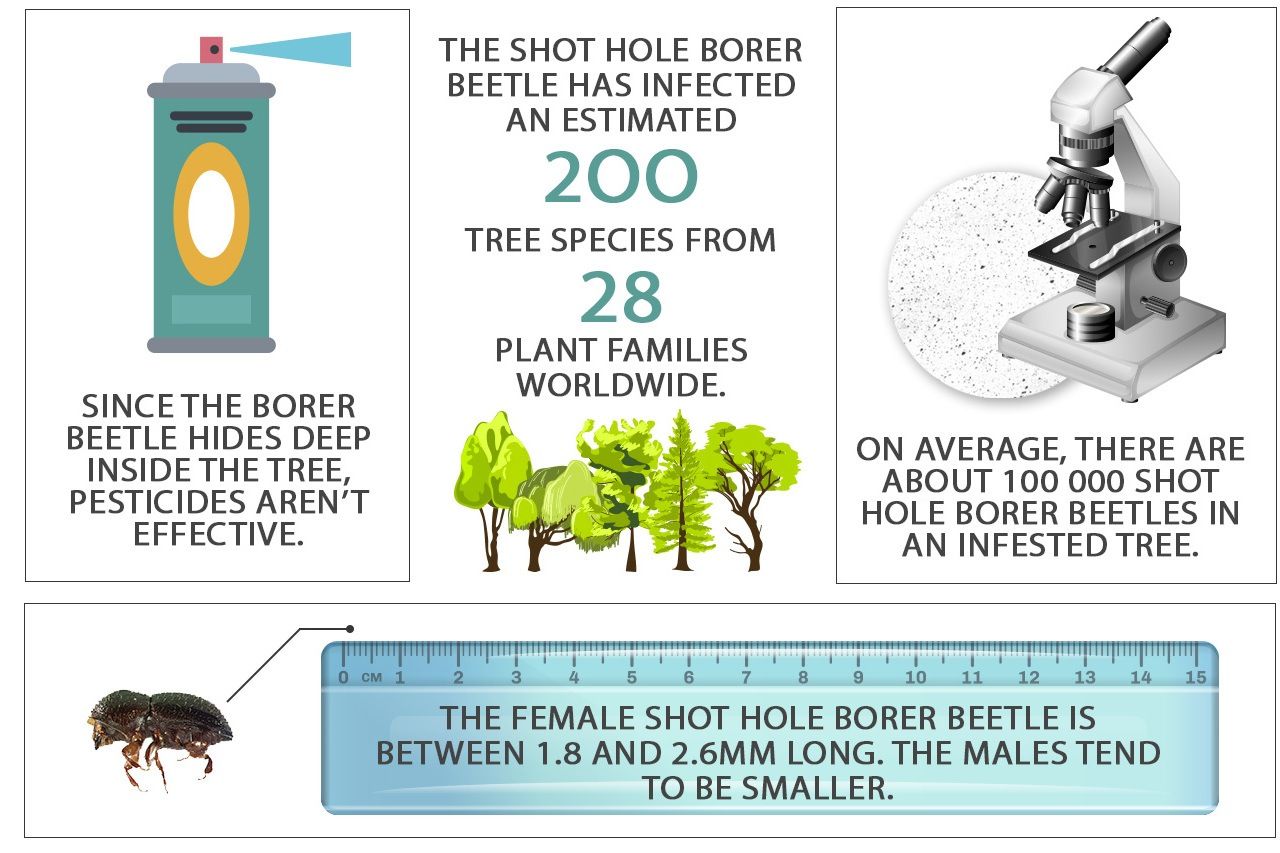A tiny alien invader is threatening South Africa’s trees. Called the Polyphagous Shot Hole Borer Beetle (or PSHB), this little critter is cause for huge concern. According to scientists, the PSHB has managed to wriggle its way into millions of trees across the world, and now it’s been spotted in local trees.
First detected in London Plane trees in KwaZulu-Natal in 2017, the PSHB has now spread to several provinces across the country, most notably in Johannesburg. Several tree species have fallen prey to these flying insects including the Forest Bushwillow, Coast Coral Tree, Water Blossom Pea, Fountain Bush and Cape Willow. Click here for a full list of trees affected in South Africa.
Contrary to belief, the beetle isn’t the direct cause of harm to the tree. Instead, the beetle releases a fungus called Fusarium euwallaceae. The fungus, which is necessary for the beetles to survive and feed their larvae, begins to grow within the vascular system of the tree, blocking the tiny tunnels within the tree’s structure and preventing water, sugar from the leaves and other nutrients from traveling throughout the tree.
TELL-TALE SIGNS
Although the PSHB is difficult to see, there are some things to look out for on the tree itself to determine whether there’s a possible infestation. Firstly, tiny little holes (similar to shotgun pellet holes) can be seen close together on the tree trunk. This is the entry point for the beetles. There also tends to be a brownish ring of moisture around the holes which indicates the presence of fungus. Due to the branches and leaves not receiving enough water and nutrients, the leaves will begin to turn brown and the branches will dry out.
If you suspect PSHB in a tree on your property or in your area, it’s crucial that you contact PSHB as well as Tree Survey as soon as possible. They will send out an expert to come have a look and advise you on how to take down the tree.
DO NOT simply cut down the tree. Any infested tree must be chipped and burnt by authorities to prevent the spread.
Tree Survey has also made an app available whereby people can report infestations. For more on the app, you can visit the Tree Survey website.
Contrary to belief, the beetle isn’t the direct cause of harm to the tree. Instead, the beetle releases a fungus called Fusarium euwallaceae.
An infected tree has tiny holes in the trunk or branches, often with an orange-brown substance oozing out from the holes.
Sources: polyphagous-shot-hole-borer.co.za | treesurvey.co.za



